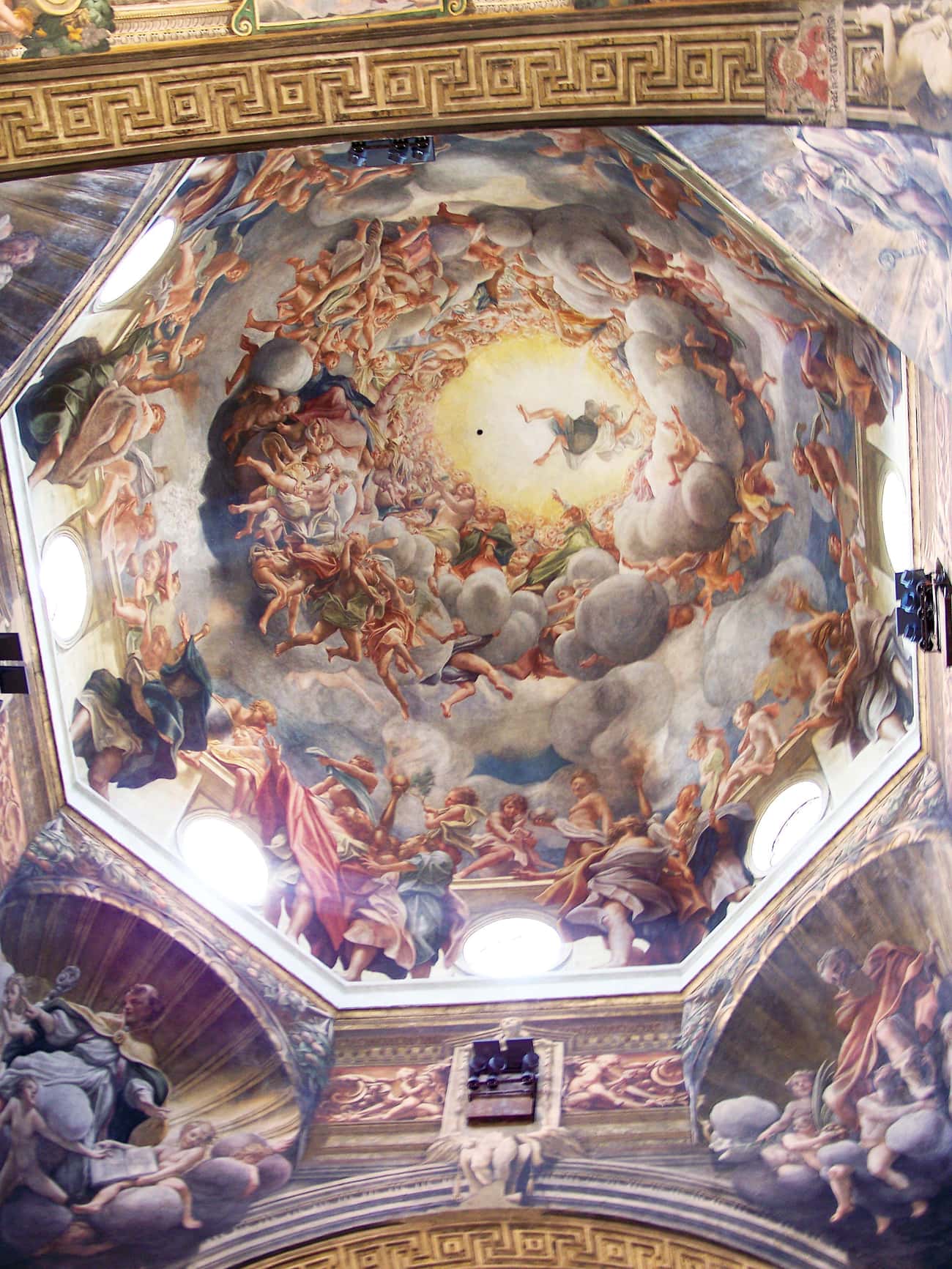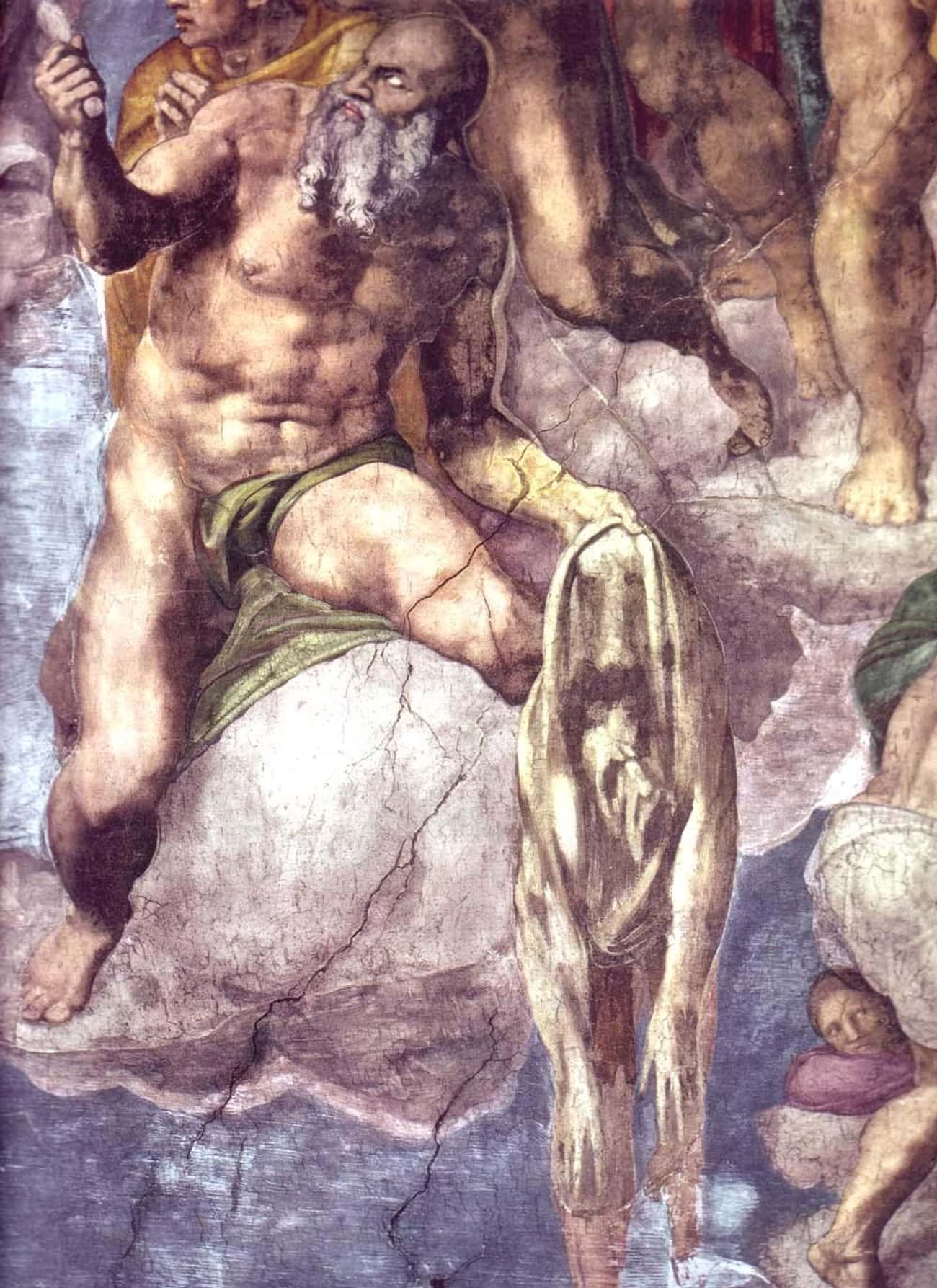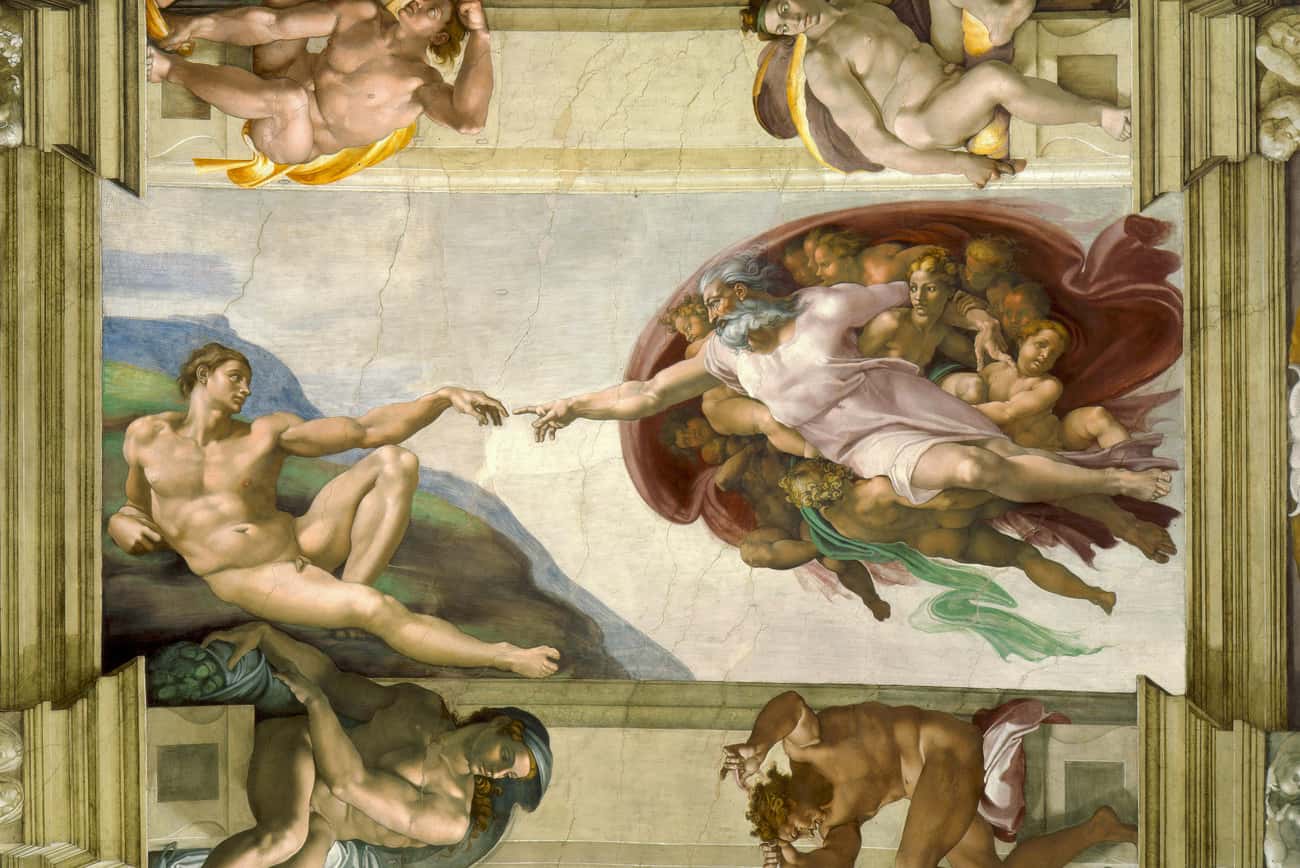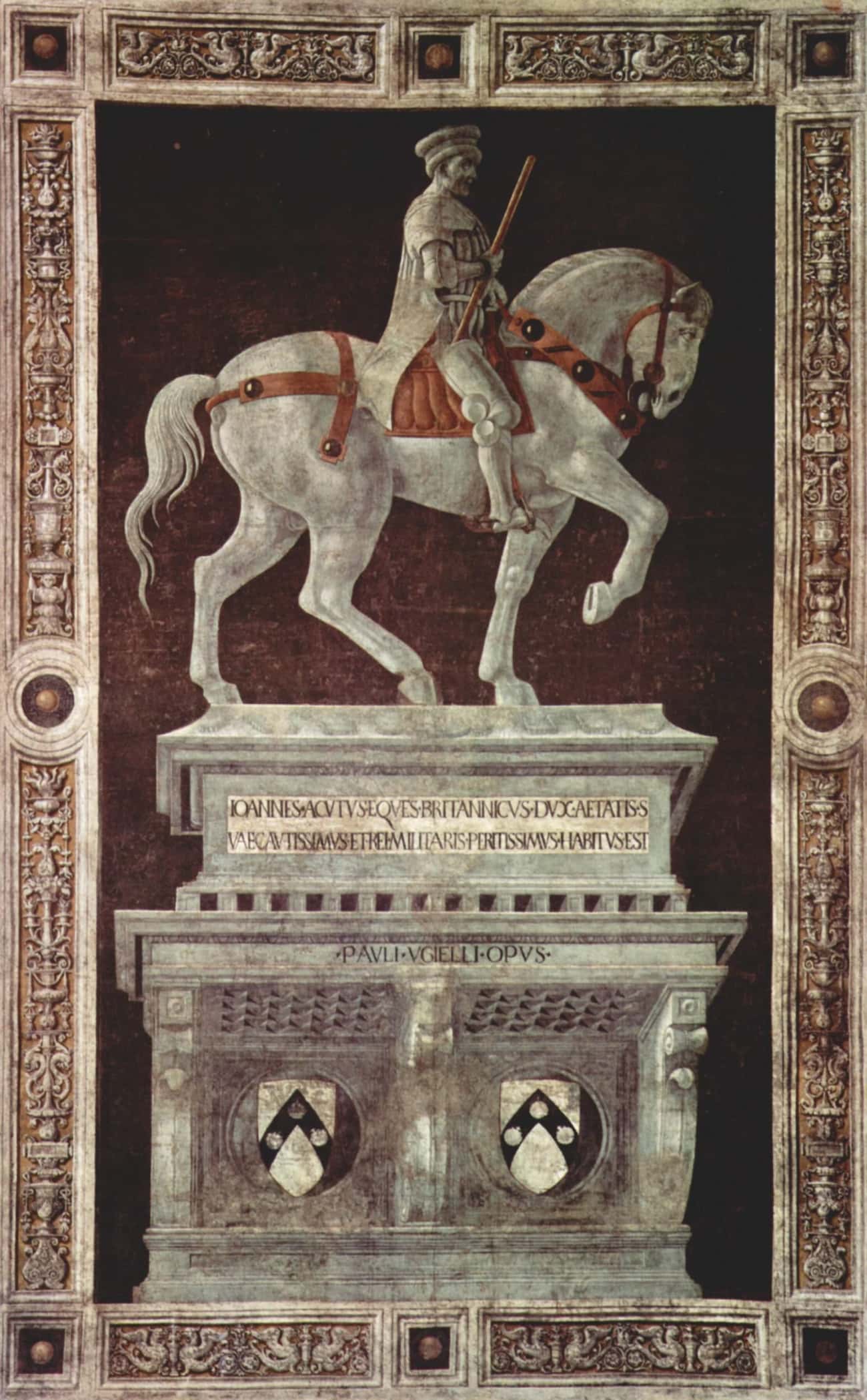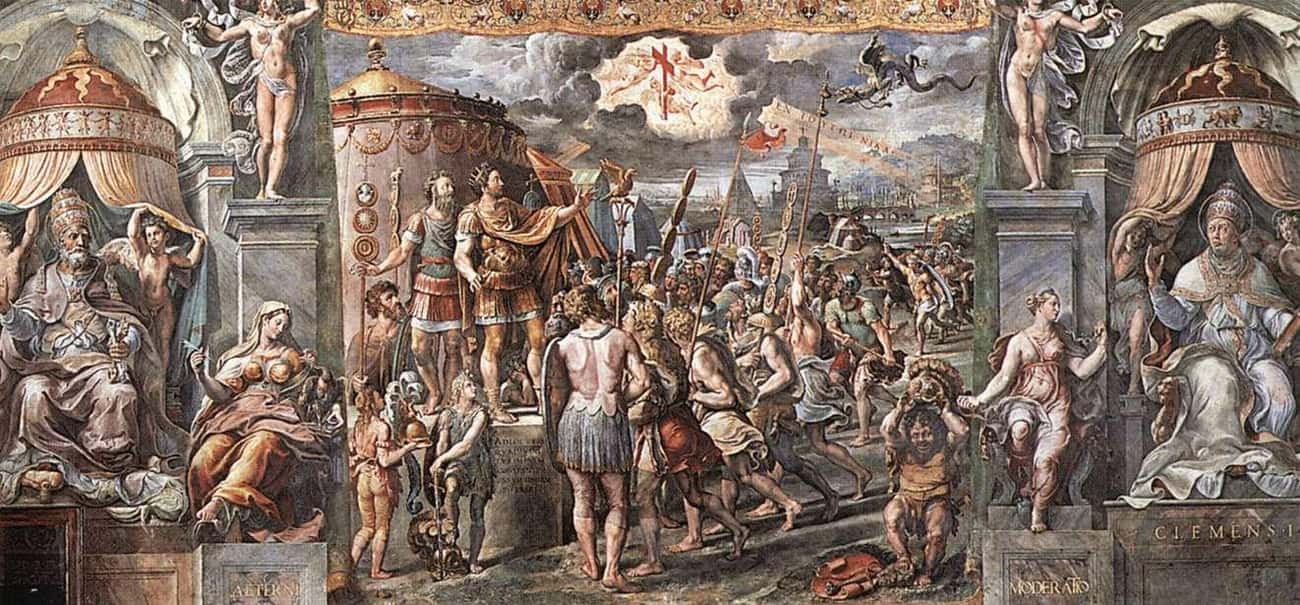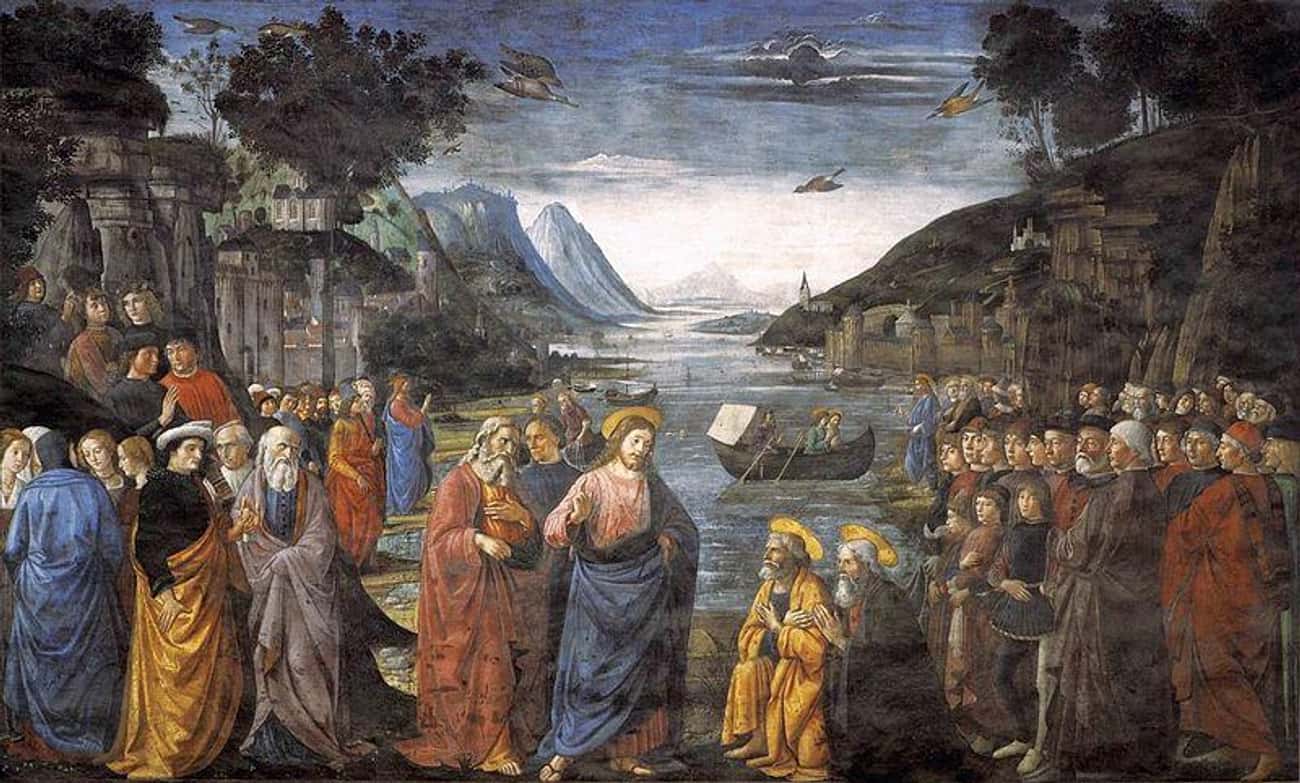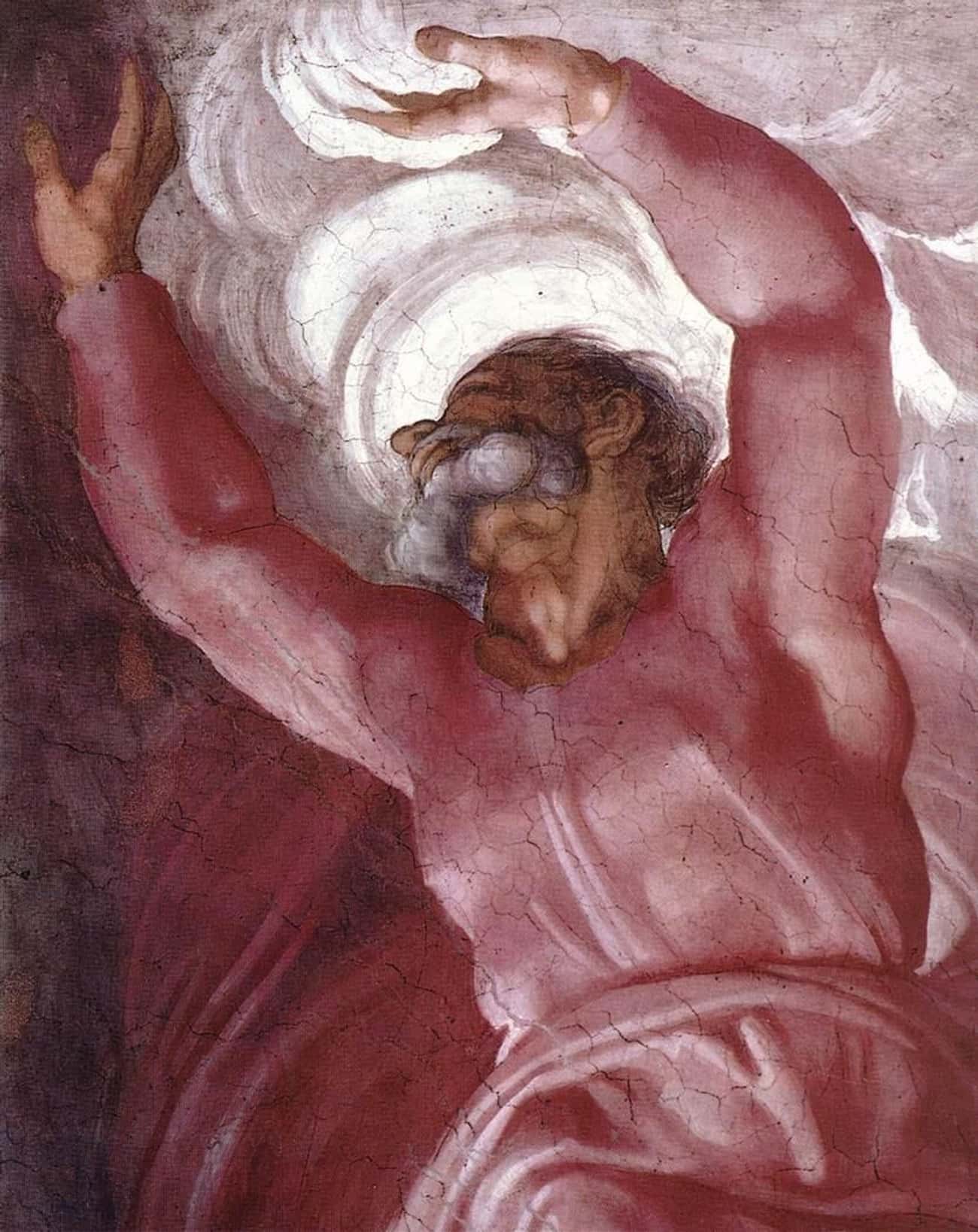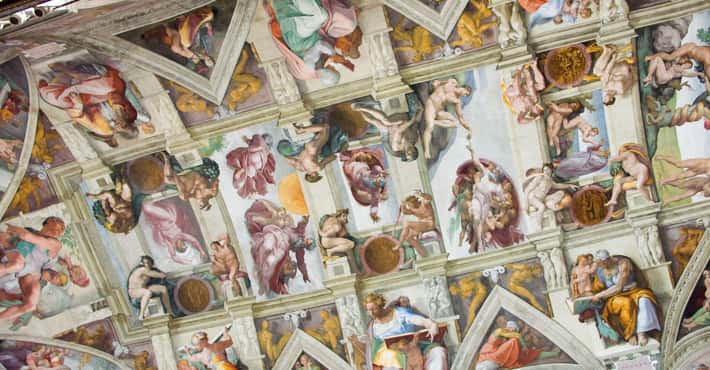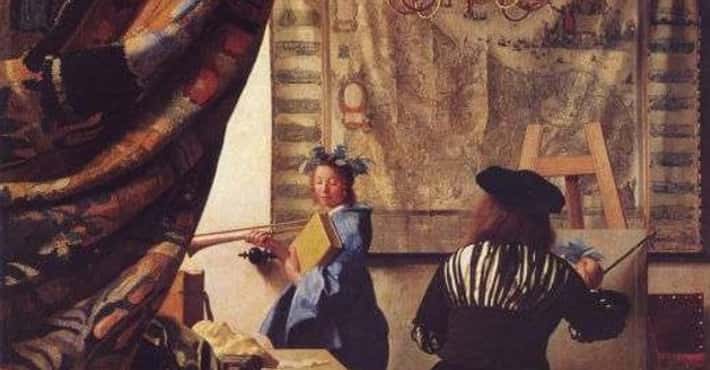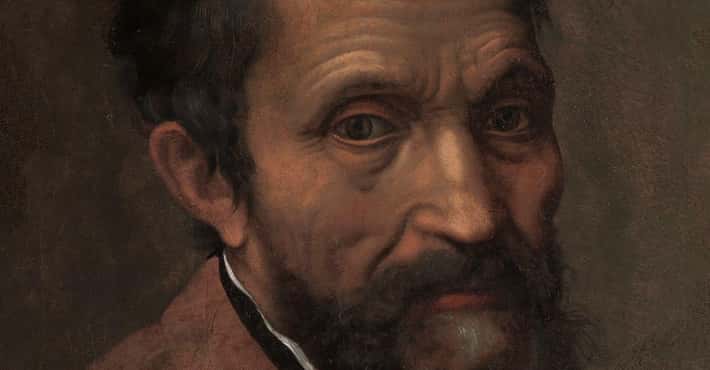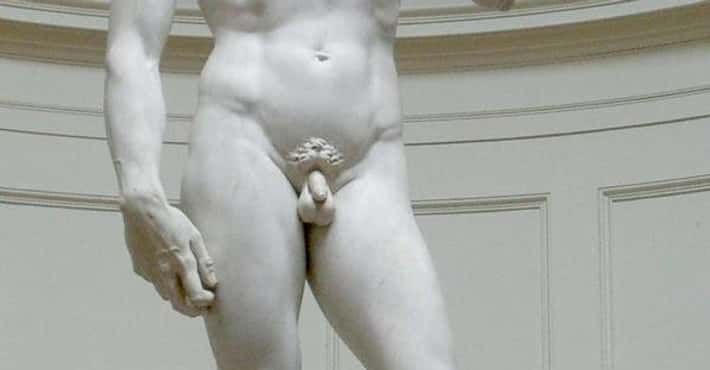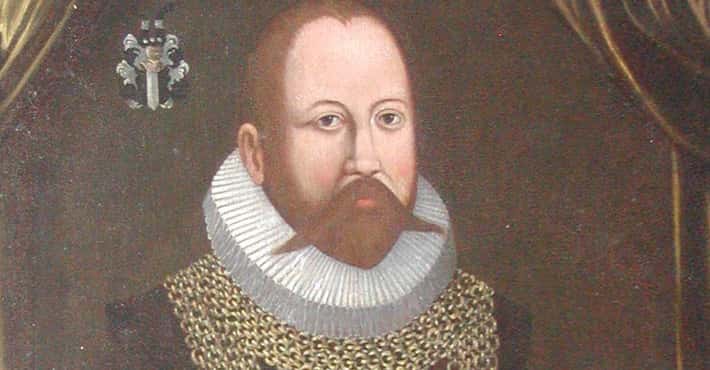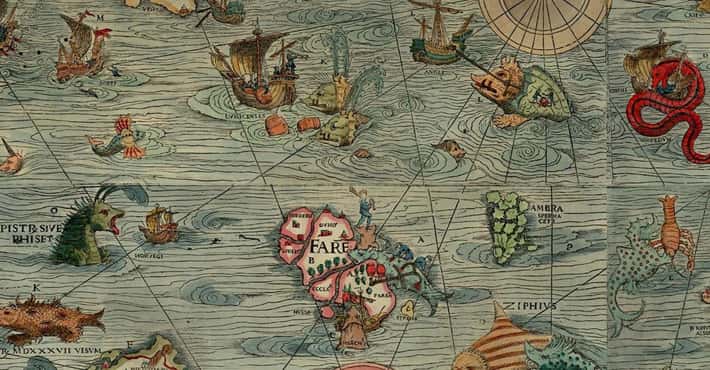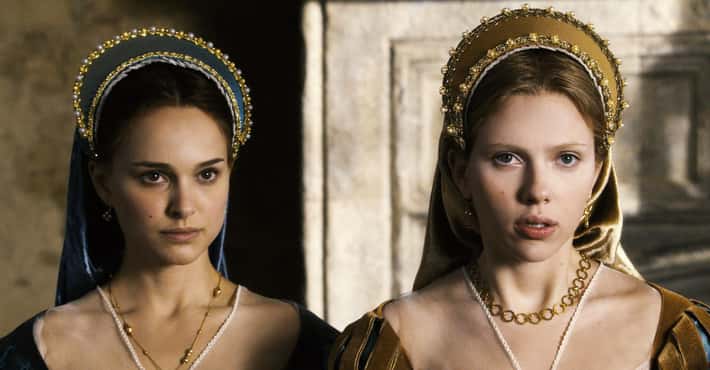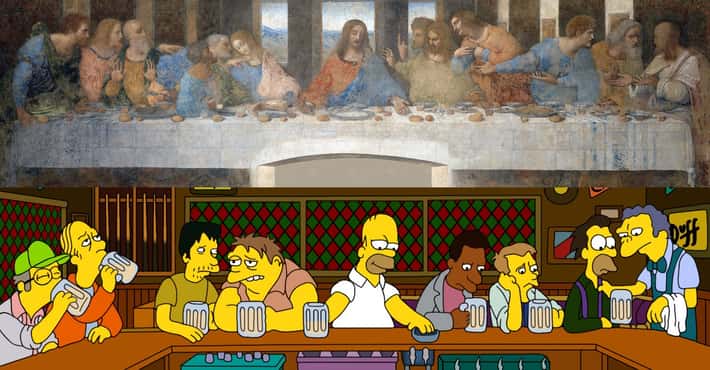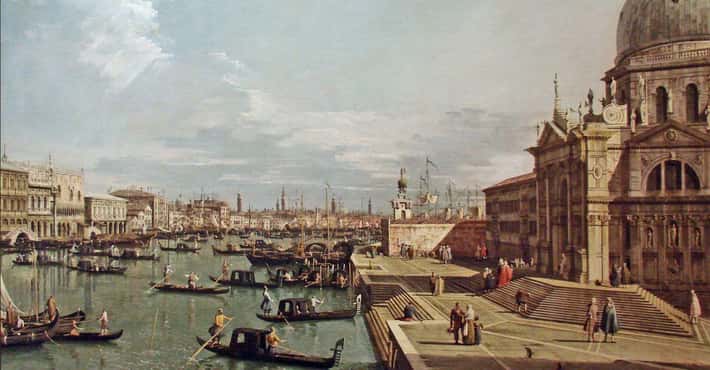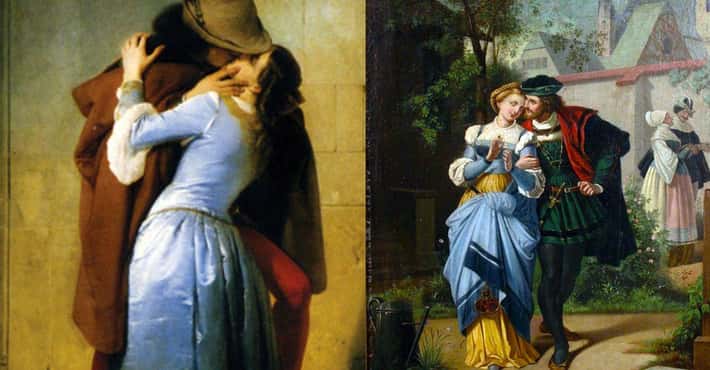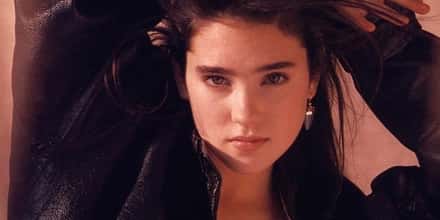The Greatest Frescoes of the Italian Renaissance
- 16 VOTESPhoto: Metaweb (FB) / Public domainThe Assumption of the Virgin is a fresco by the Italian Late Renaissance artist Antonio da Correggio decorating the dome of the Cathedral of Parma, Italy. Correggio signed the contract for the painting on November 3, 1522. It was finished in 1530. The composition was influenced by Melozzo da Forlì's perspective and includes the decoration of the dome base, which represents the four protector saints of Parma: St. John the Baptist with the lamb, St. Hilary with a yellow mantle, St. Thomas with an angel carrying the martyrdom palm leaf, and St. Bernard, the sole figure looking upwards. Below the feet of Jesus, the uncorrupt Virgin in red and blue robes is lofted upward by a vortex of singing or otherwise musical angels. Ringing the base of the dome, between the windows, stand the perplexed Apostles, as if standing around the empty tomb in which they have just placed her. In the group of the blessed can be seen: Adam and Eve, Judith with the head of Holofernes. At the centre of the dome is a foreshortened beardless Jesus descending to meet his mother.
- 24 VOTESPhoto: Metaweb (FB) / Public domainThe Last Judgment, or The Last Judgement, is a fresco by the Italian Renaissance master Michelangelo executed on the altar wall of the Sistine Chapel in Vatican City. It is a depiction of the Second Coming of Christ and the final and eternal judgment by God of all humanity. The souls of humans rise and descend to their fates, as judged by Christ surrounded by prominent saints including Saints Catherine of Alexandria, Peter, Lawrence, Bartholomew, Paul, Sebastian, John the Baptist, and others. The work took four years to complete and was done between 1536 and 1541 Michelangelo began working on it twenty five years after having finished the Sistine Chapel ceiling. An older and more thoughtful Michelangelo originally accepted the commission for this important painting from Pope Clement VII. The original subject of the mural was the resurrection, but with the Pope's death, his successor, Pope Paul III, felt the Last Judgment was a more fitting subject for 1530s Rome and the judgmental impulses of the Counter-Reformation. While traditional medieval last judgments showed figures dressed according to their social positions, Michelangelo created a new standard.
- 34 VOTESThe Creation of Adam is a fresco painting by Michelangelo, which forms part of the Sistine Chapel's ceiling, painted circa 1511–1512. It illustrates the Biblical creation narrative from the Book of Genesis in which God breathes life into Adam, the first man. The fresco is part of a complex iconographic scheme and is chronologically the fourth in the series of panels depicting episodes from Genesis. It is the most well-known of the Sistine Chapel fresco panels, and its fame as a piece of art is rivaled only by the Mona Lisa by Leonardo da Vinci. The image of the near-touching hands of God and Adam has become iconic of humanity and has been reproduced in countless imitations and parodies. Leonardo da Vinci's Last Supper and Michelangelo's Creation of Adam are the most replicated religious paintings of all time.
- Photo: Metaweb (FB) / Public domainThe Funerary Monument to Sir John Hawkwood is a fresco by Paolo Uccello, commemorating English condottiero John Hawkwood, commissioned in 1436 for Florence's Basilica di Santa Maria del Fiore. The fresco is an important example of art commemorating a soldier-for-hire who fought in the Italian paeninsula and is a seminal work in the development of perspective. The politics of the commissioning and recommissioning of the fresco have been analyzed and debated by historians. The fresco is often cited as a form of "Florentine propaganda" for its appropriation of a foreign soldier of fortune as a Florentine hero and for its implied promise to other condottieri of the potential rewards of serving Florence. The fresco has also been interpreted as a product of internal political competition between the Albizzi and Medici factions in Renaissance Florence, due to the latter's modification of the work's symbolism and iconography during its recommissioning. The fresco is the oldest extant and authenticated work of Uccello, from a relatively well-known aspect of his career compared to the periods before and after its creation.
- 51 VOTESPhoto: Metaweb (FB) / Public domainThe Flight into Egypt (c. 1304-1306) is a painting by Italian artist Giotto di Bondone.
- #26 of 49 onThe Greatest Famous Frescoes
- #41 of 119 onThe Greatest Works of Art from the Italian Renaissance
- #99 of 168 onThe Most Amazing Pieces of Artwork Ever Made
- 61 VOTESPhoto: Metaweb (FB) / Public domainThe Vision of the Cross is a painting made between 1520 and 1524 by assistants of the Italian renaissance artist Raphael. After the master's death in 1520, Gianfrancesco Penni, Giulio Romano and Raffaellino del Colle from Raphael's workshop worked together to finish the commission to decorate with frescoes the rooms that are now known as the Stanze di Raffaello, in the Apostolic Palace in the Vatican. The Vision of the Cross is located in the Sala di Costantino. In the painting, emperor Constantine I is seen just before the Battle of the Milvian Bridge on October 28, 312. According to legend, a cross appeared to Constantine in the sky, after which as seen in the fresco and following Eusebius of Caesarea Vita Constantini, he adopted the Greek motto "Εν τούτῳ νίκα", i.e. "By this, conquer", a motto that has been rendered in Latin as "In hoc signo vinces", i.e. "In this sign you shall conquer". This Mannerist painting is a crowded and confused melee and melange of images, including a dragon, a dwarf, two popes, and various symbols. Proportions among the soldiers appear confused, with some dwarfed by more distant figures.
- Photo: Metaweb (FB) / Public domainThe Calling of the First Apostles (1481-1482) is a fresco painted by Italian Renaissance artist Domenico Ghirlandaio.
- Photo: Metaweb (FB) / Public domainThe Separation of Light from Darkness is, from the perspective of the Genesis chronology, the first of nine central panels that run along the center of Michelangelo's Sistine Chapel ceiling and which depict scenes from the Book of Genesis. Michelangelo probably completed this panel in the summer of 1512, the last year of the Sistine ceiling project. It is one of five smaller scenes that alternate with four larger scenes that run along the center of the Sistine ceiling. The Separation of Light from Darkness is based on verses 3–5 from the first chapter of the Book of Genesis: ³And God said, "Let there be light," and there was light. ⁴God saw that the light was good, and He separated the light from the darkness. ⁵God called the light "day," and the darkness he called "night." And there was evening, and there was morning—the first day. Although in terms of the Genesis chronology it is the first of nine central panels along the Sistine ceiling, the Separation of Light from Darkness was the last of the nine panels painted by Michelangelo. Michelangelo painted the Sistine ceiling in two stages.
- 90 VOTESPhoto: Metaweb (FB) / Public domainThe Conversion of Saul is a fresco painted by the Italian Renaissance master Michelangelo Buonarroti. It is housed in the Cappella Paolina, Vatican Palace, in the Vatican City. The style is more mannerist than his earlier Sistine Chapel frescoes, and was not as well received by contemporaries. The next fresco he completed was The Crucifixion of St. Peter.


